COMPLETING YOUR
DOCTORAL DISSERTATION
OR MASTERS THESIS
Completing Your Doctoral
Dissertation or Masters
Thesis
in two semester or less
Second Edition
Evelyn Hunt Ogden

Published in the United States of America
by ScarecrowEducation
An imprint of The Rowman & Littlefield Publishing Group, Inc.
4501 Forbes Boulevard, Suite 200, Lanham, Maryland 20706
www.scarecroweducation.com
PO Box 317
Oxford
OX2 9RU, UK
Copyright 2002 by Evelyn Hunt Ogden
All rights reserved. No part of this publication may be reproduced, stored in a retrieval system, or transmitted in any form or by any means, electronic, mechanical, photocopying, recording, or otherwise, without the prior permission of the publisher.
The Technomic edition of this book was catalogued as follows by the Library of Congress:
Main entry under title:
Completing Your Doctoral Dissertation or Masters Thesis:
In Two Semesters or Less-Second Edition
A Technomic Publishing Company book
Bibliography: p.
Library of Congress Catalog Card No. 93-60088
ISBN: 978-1-55676-035-5
 The paper used in this publication meets the minimum requirements of American National Standard for Information SciencesPermanence of Paper for Printed Library Materials, ANSI/NISO Z39.48-1992.
The paper used in this publication meets the minimum requirements of American National Standard for Information SciencesPermanence of Paper for Printed Library Materials, ANSI/NISO Z39.48-1992.
Manufactured in the United States of America.
In memory of my advisor Peter A. Taylor, Ph.D.
who was both Professor T and Professor D
and
To future and current graduate students
and to those who have dropped out
but are willing to give it one more try,
this book is dedicated to evening the odds
between the student and university.
CONTENTS
LISTS, TESTS, FORMS, AND CHARTS
ACKNOWLEDGEMENTS
I wish to thank Elizabeth Casey and Diana Robinson, who spent many hours reading and editing drafts and making recommendations.
I also wish to thank the doctors, Ph.D.W.D.s, and Ed.D.A.B.D.s who shared with me profiles of their advisors and committee members and some of the horror stories of their dissertation experiences. For obvious reasons their contributions must remain anonymous.
I also wish to thank the doctors of philosophy and education who encouraged me to write this book. It was a privilege to work with them on their dissertations. Each project was a learning experience for me and I thoroughly enjoyed being involved.
INTRODUCTION
Dr. ________________ (insert your name) or Mr., Miss, Mrs., Ms. ________________ (insert your name), what will be your title? Every year thousands of the more than one million graduate students in the U.S. complete course work, qualifying exams, and dissertations and are awarded doctorates. Many of the completers complain bitterly of the months and years spent laboring over their dissertations. However, it is estimated that as many as 50% of doctoral-level students complete their course work but never complete the write of passage. They become the Ph.D.W.D.s (Doctor of Philosophy Without Dissertation) or Ed.D.A.B.D.s (Doctor of Education All But Dissertation), a state in life as useful as almost surviving an operation. Anyone who is admitted to graduate school, completes the course work and passes the qualifying exam can write a successful dissertation; moreover, the experience need not be painful nor the operation long. You can do the actual writing in twenty days, and the planning, proposal development, data collection, data analysis, and defense in another thirty days. You can complete the process in fifty workdays (twenty-five weekends) over two semesters (see proposed time line on page xviii), you can work for a living, and you can continue your social life. You can produce a quality dissertation or thesis.
Skeptical? Try one of these exercises. If you are an employed graduate student, pull out all the memos, letters, and reports you have done in conjunction with your job in the past month. Next, add the last two or three course papers you have written. Put them in a pile. Pretty thick, isnt it? About the length of a decent dissertation: 100 pages (appendices not included). If you are a full-time graduate student, collect the last five or six papers you have written. On the back, in pencil (you may want to erase the evidence), write the number of hours you really spent writing the paper. Exclude time for coffee breaks, time complaining about writing the paper, and time daydreaming. Are the papers taken together 100 pages? Did the total writing time exceed 140 hours, or twenty seven-hour workdays?
Hopefully, you now agree that you can write 100 pages in twenty days. A dissertation is certainly more than a pile of memos and end-of-course papers, but it doesnt need to take more real work time to write. A dissertation is the proof that you have made the rite of passage from student to scholar by the production of credible research in your field. The important word in this definition is credible. A dissertation is not the great American novel. The plot is almost certainly dull. When was the last time you read a dissertation for pleasure? Have you ever read a dissertation? Even in your field of study, your dissertation will not add great new insights. It will add one very small credible piece to the incremental development of knowledge in your field. It should not be the last piece of research you contribute to your field, but the first in your new professional life.
If a dissertation is, in fact, just a straightforward example of very limited research written in a simple style, then why are there so many Ph.D.W.D.s and Ed.D.A.B.D.s? Why are there so many horror stories connected to writing dissertations? The reasons for prolonged pain and, in too many cases, failure include:
failure to get your head on straight about what a dissertation is and is not
panic and paralysis from listening to and believing the horror stories
failure to recognize the dissertation as a rite of passage, as well as a write of passage
lack of guidance and training in how to design and plan a dissertation
selection of the wrong advisor or committee
selection of the wrong topic
failure to get the right help
failure to invest money to save money
failure to take charge of the project
This book will guide you through advisor/committee and topic selection, proposal development, data collection, data analysis, writing, editing, and defense of your dissertation. It is equally useful to publish-or-perish professors or those working on masters theses. It will lead you around the pitfalls of head games, topic selection, advisors, committees, and yourself. It will help you navigate both the write and rite of passage. You will find as you travel through the book that your dissertation need not be a long painful interruption in your life, but a relatively short, tolerable experience with many rewards and controlled costs. The sample time line on page xviii illustrates how major dissertation activities fit into a TWO-SEMESTER work plan (if you have the luxury of more time or there is a longer wait-time for experimental results, then you can spread the workdays over a longer time frame).
When Is the Best Time to Use This Book?
1. Before you apply to graduate school
2. During your early course work
3. At the time when you are ready to begin your dissertation or thesis
4. When you are already in the dissertation game
5. When you are ready to defend your dissertation or thesis
Next page

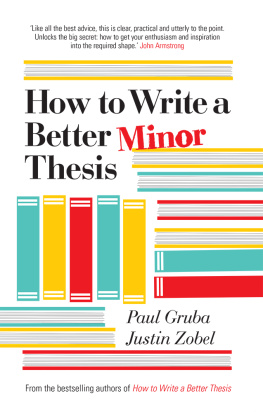
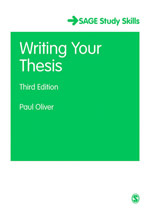
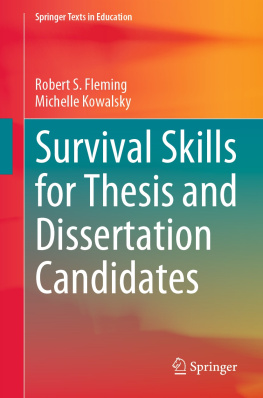

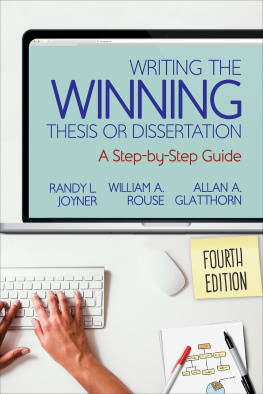
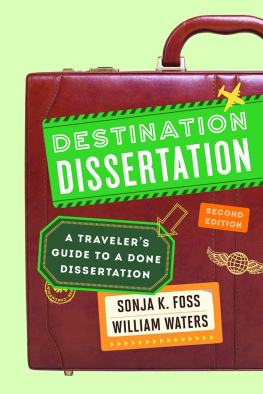

 The paper used in this publication meets the minimum requirements of American National Standard for Information SciencesPermanence of Paper for Printed Library Materials, ANSI/NISO Z39.48-1992.
The paper used in this publication meets the minimum requirements of American National Standard for Information SciencesPermanence of Paper for Printed Library Materials, ANSI/NISO Z39.48-1992.